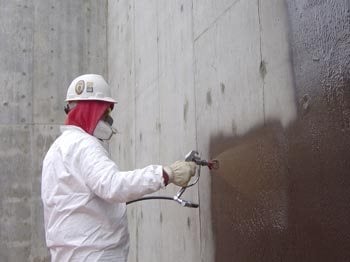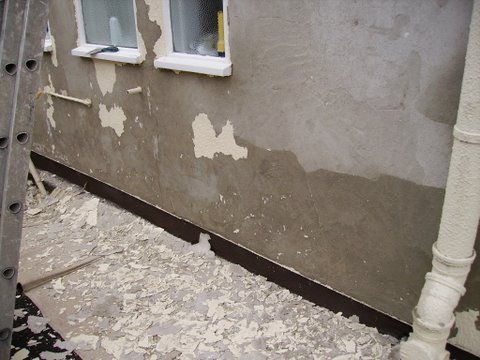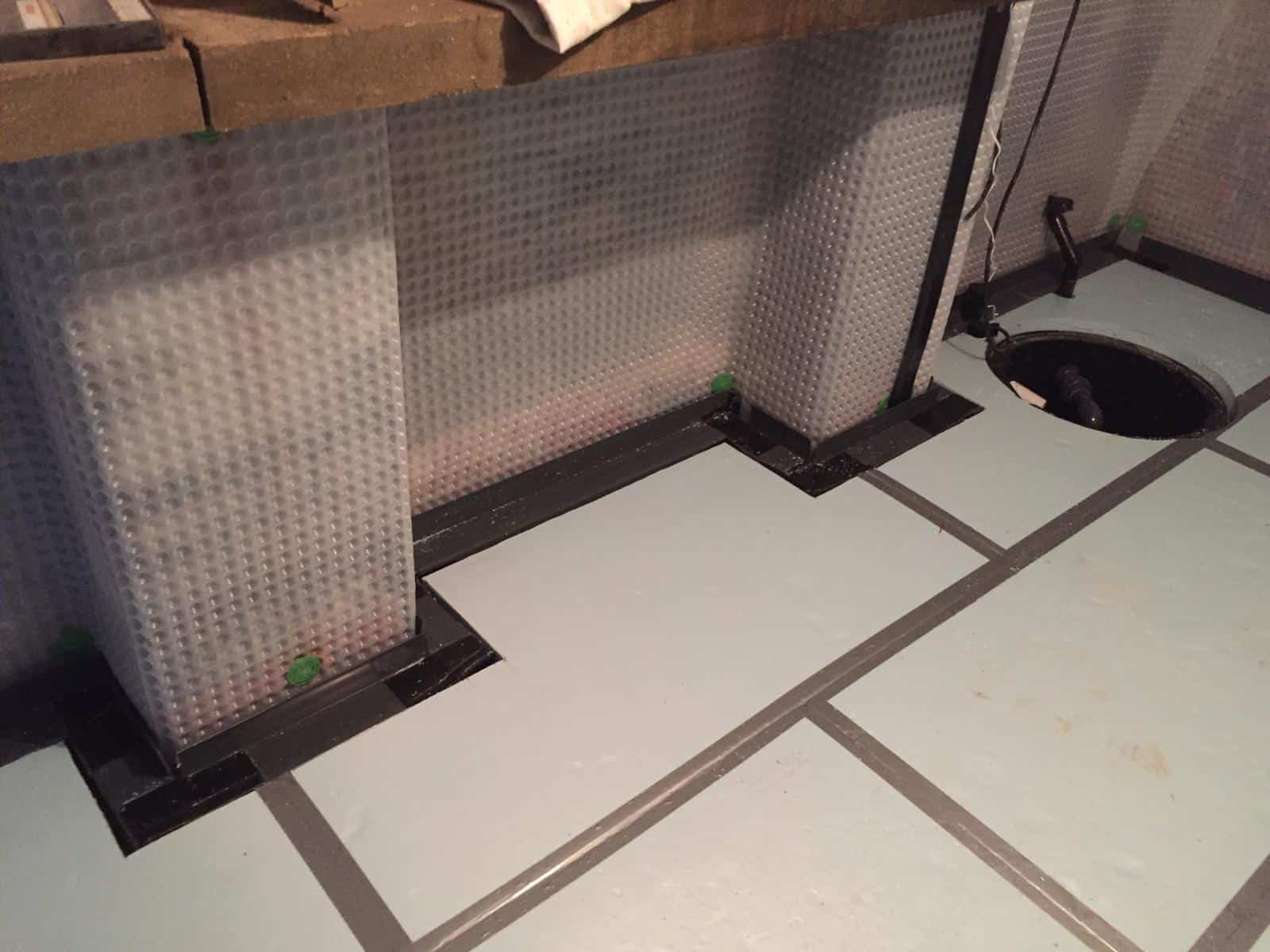Exploring the Various Strategies and Solutions for Effective Damp Proofing
Wetness in buildings presents significant challenges to both architectural honesty and interior air top quality. Various methods and options have actually arised to battle this prevalent issue. From traditional damp-proof membranes to innovative chemical treatments, each method provides distinct benefits. Recognizing these alternatives is essential for reliable wetness control. Choosing the appropriate service depends on particular building conditions and demands, triggering more exploration right into the most effective moist proofing approaches available.
Comprehending the Causes of Dampness
Although dampness can emerge from different resources, understanding these reasons is crucial for effective removal. Commonly, wetness originates from three main resources: climbing damp, permeating damp, and condensation. Rising moist occurs when groundwater takes a trip up with porous materials, such as brick or rock, usually as a result of a lack of an effective barrier (damp specialist newcastle). Passing through wet is commonly created by external aspects, consisting of roof leaks, damaged gutters, or damaged wall surfaces, enabling water to penetrate a property. Condensation, on the other hand, results from excess wetness in the air, often aggravated by inadequate ventilation and temperature level distinctions, bring about water beads basing on surface areas. Identifying these underlying concerns is important, as each kind of wetness calls for a customized method for removal. Correct analysis aids in determining the most reliable options, inevitably protecting the structural honesty of a building and improving interior air top quality
Typical Damp-Proof Membrane Layers

Chemical Damp-Proofing Solutions
Chemical damp-proofing services supply a cutting-edge method to stopping moisture intrusion in structures. These methods normally include the application of liquid chemicals that penetrate masonry and create an obstacle against rising damp. Generally utilized chemicals consist of silanes, siloxanes, and various other water-repellent agents that respond with surface area products to develop a hydrophobic layer.The application process usually needs boring openings right into the walls, injecting the chemical remedy, and permitting it to heal. This technique is particularly advantageous for older structures where typical damp-proof membrane layers may be not practical. Chemical damp-proofing can be less turbulent and a lot more affordable than substantial restoration projects.While effective, these options depend on appropriate application and ecological conditions for peak performance. damp proofing newcastle. Regular upkeep and monitoring are vital to ensure the longevity of the damp-proofing treatment. On the whole, chemical damp-proofing stands for a functional choice for guarding buildings against moisture-related damages
Tooth Cavity Wall Surface Construction Strategies
Tooth cavity wall surface construction methods supply countless benefits, particularly in moisture control and power effectiveness. By integrating an air gap in between 2 layers of stonework, these wall surfaces properly minimize water access while enhancing insulation. This combination not just secures frameworks from dampness but also contributes to reduced energy consumption.
Advantages of Tooth Cavity Walls
When considering effective moist proofing methods, the advantages of dental caries wall surfaces stand apart prominently. Tooth cavity wall surfaces contain two separate layers, producing an air gap that successfully minimizes dampness penetration. This layout decreases the threat of dampness, as the outer wall functions as an obstacle versus rain and water ingress. Additionally, dental caries wall surfaces enhance thermal insulation, which adds to power efficiency by reducing heat loss. They additionally provide audio insulation, aiding to produce a quieter interior setting. The air space enables for air flow, which aids in wetness control and minimizes the probability of mold and mildew development. These benefits not only improve the general convenience of a building but additionally add to its longevity and structural integrity.
Dampness Control Techniques
Reliable moisture control techniques are critical in dental caries wall construction to assure long-term security against wetness. One main approach includes the consolidation of weep holes, which help with water drainage from the tooth cavity, preventing accumulation. Furthermore, using breathable membranes can aid handle dampness levels while permitting caught vapor to escape. Proper positioning of insulation is likewise crucial, as it must not obstruct water drainage courses. In addition, ensuring that the external leaves of the cavity wall are built with water-resistant products enhances overall sturdiness. Routine upkeep checks are necessary to determine any type of obstructions or damage early, protecting the structure's stability. Ultimately, a mix of these techniques forms a robust defense against moisture intrusion in tooth cavity walls.
Insulation and Energy Effectiveness
Insulation plays a crucial duty in improving energy effectiveness within cavity wall building. By incorporating protecting materials, these wall surfaces produce a thermal barrier that minimizes warm loss and minimizes energy intake. Reliable insulation not only aids maintain a stable indoor temperature yet also alleviates the danger of dampness, as it protects against condensation within the wall surface tooth cavity. Various methods, such as making use of rigid foam boards or mineral woollen, can be employed to accomplish perfect insulation efficiency. In addition, proper installment is necessary to ensure that gaps and voids are decreased, which can or else compromise energy effectiveness. Ultimately, a well-insulated dental caries wall surface contributes significantly to overall sustainability and reduces home heating and air conditioning prices for home owners.
Outside Damp Proofing Methods
Exterior damp proofing methods are vital for shielding structures from moisture seepage. Two efficient techniques consist of the application of water-proof membranes and the setup of French drains. These services assist alleviate water accumulation and protect the stability of buildings.
Waterproof Membrane Application
While different approaches exist for stopping dampness access, the application of waterproof membranes stays a very reliable outside damp proofing method. These membrane layers are typically made from materials such as polyethylene, rubber, or changed bitumen, supplying a robust obstacle versus water infiltration. The installation procedure includes using the membrane to the exterior surface areas of structures or wall surfaces, guaranteeing total insurance coverage to avoid leakages. Appropriate bond and sealing at joints are vital to maximizing performance. Waterproof membranes can be used in numerous types, consisting of liquid finishings and sheet membrane layers, allowing for versatility based on the particular requirements of the structure. This method not only protects buildings from moisture but additionally boosts their durability and architectural honesty.
French Drain Setup
One efficient technique for managing groundwater and stopping dampness buildup around a building's structure is the installation of a French drainpipe. This water drainage system includes a trench full of gravel and a perforated pipeline that reroutes surface area water far from the structure. Proper installment requires careful planning, making sure that the drainpipe slopes away from the structure to assist in suitable water circulation. In addition, the location of the drain is vital; it needs to be positioned in locations vulnerable to pooling or excess wetness. Routine upkeep, including clearing up particles from the gravel and ensuring the pipe remains unobstructed, is crucial for lasting performance. Eventually, a well-installed French drainpipe can significantly minimize the risk of water-related issues in foundations and basements.
Interior Waterproofing Techniques
Interior waterproofing approaches are essential for safeguarding a structure's interior from wetness infiltration and prospective water damages. These approaches typically include the application of specific materials and strategies designed to produce a dampness obstacle within the structure. One usual strategy is using waterproof coverings or sealers on walls and floors, which prevent dampness from permeating surfaces.Additionally, mounting indoor drainage systems, such as sump pumps, can efficiently handle water build-up in basements and creep rooms. Another technique entails the use of vapor obstacles, which are installed to inhibit moisture activity from the ground into living spaces.Moreover, attending to any kind of cracks or gaps in walls or foundations with suitable sealants assures an extensive protection versus water intrusion. By applying these interior waterproofing strategies, residential property owners can substantially minimize the threat of mold and mildew growth, architectural damage, and various other moisture-related problems. Proper execution of these techniques is vital for lasting security and structure stability.
Routine Upkeep and Inspection Practices
Normal upkeep and evaluation methods are crucial for guaranteeing the long-term efficiency of moist proofing remedies in any building. Regular checks allow homeowner to recognize very early indicators of moisture invasion, such as peeling off paint, mold and mildew growth, and stuffy smells. These indications can indicate underlying problems that need prompt attention.Inspections must be conducted a minimum of every year, concentrating on prone locations like basements, crawl areas, and exterior walls. During these analyses, homeowner ought to check out sealants, drain systems, and ventilation to validate they work correctly.Additionally, preserving downspouts and gutters is important, as clogged up systems can cause water accumulation near the structure. Implementing a routine maintenance routine, together with timely repairs, can significantly prolong the life-span of wet proofing actions and protect the architectural integrity of the structure. Aggressive procedures inevitably add to the general wellness and safety and security of the living environment.
Frequently Asked Concerns
How Much Time Does Damp Proofing Usually Last?
The period of damp proofing efficiency differs, commonly lasting in between 20 to half a century. Aspects such as application top quality, ecological problems, and maintenance techniques considerably influence the durability of the moist proofing therapy.

Can I Damp Evidence My Home Myself?
The specific considered the usefulness of do it yourself damp proofing. With appropriate research and the best materials, it is possible. They additionally identified the significance of expert assistance to guarantee long-lasting effectiveness and prevent future problems.
What Are the Signs of Inefficient Damp Proofing?
Indications of ineffective damp proofing consist of relentless musty smells, noticeable mold development, peeling off paint, wet patches on wall surfaces, and wood decay - mould removal newcastle. Property owners need to attend to these issues without delay to protect against more damage and health and wellness issues
Does Damp Proofing Affect Indoor Air Quality?

Just How Much Does Specialist Damp Proofing Cost?
Expert wet proofing costs differ considerably, commonly ranging from $1,000 to $5,000 depending upon the home's dimension, the extent of the damp problem, and picked methods. Each circumstance calls for a customized assessment for accurate rates. Generally, moisture originates from three key sources: increasing damp, penetrating wet, and condensation. When thinking about efficient moist proofing methods, the benefits of tooth cavity walls stand out prominently. External wet proofing methods are crucial for safeguarding frameworks from moisture seepage. While various more info methods exist for stopping dampness ingress, the application of water resistant membranes continues to be a highly efficient external wet proofing technique. Signs of inefficient damp proofing include persistent musty smells, visible mold development, peeling off paint, moist patches on wall surfaces, and timber degeneration.
Comments on “How mould removal newcastle can enhance your indoor air quality”